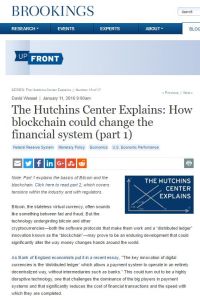
The Hutchins Center Explains: How Blockchain Could Change the Financial System, Part 1
Read or listen offline
Recommendation
While most people may not yet have bitcoins and other cryptocurrencies in their online wallets, the possibility that these virtual monies will transform the worldwide payment regime is real. Underlying this digital legal tender is the advanced technology of blockchains and distributed ledgers. In this first of two informative reports (click here for part 2), David Wessel of the Brookings Institution explains what the two innovations entail, how they operate, and what potential opportunities as well as risks they portend. getAbstract considers this useful primer required reading for those who want to understand the implications of the distributed ledger.
Take-Aways
About the Author
David Wessel is director of the Hutchins Center on Fiscal and Monetary Policy at the Brookings Institution.

























Comment on this summary or Start Discussion